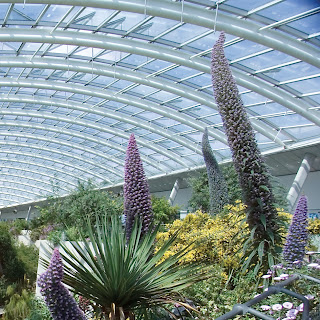What I understand by Landscape Urbanism is, I think, something that will have to unfold over the next few posts, so please bear with me. My interest is the place of plants within an ethos of LU. For a start, I need to teach this to a group of undergraduates, so what follows is my basis for this.
The aim is to enable students to equip themselves with sufficient knowledge and understanding of plant characteristics, processes and physiology to be able to freely and confidently imagine and communicate the “new natures” envisioned by landscape urbanists. For this they need to understand how plants work within an ecosystem and the key physiological mechanisms which underpin this; invention requires sufficient understanding to be able to boldly respond to the pragmatic demands of the landscape. The view of urban landscape as a “system of flows and feedback loops” (Shane, the Landscape Urbanism Reader) in which processes form spaces and “systems condition the urban form” (Corner, LU Reader) seems to me to demand the development of such expertise, in order that students can effectively manage a design process which must take account of the passing of time in an uncertain world. They will effectively have to open their minds to the possibilities created by chance and change using plants, with their growth and distribution as a change agent and in interaction with all the human systems of the city.
If landscape urbanism aims to ‘stage the ground for uncertainty and promise’ (Corner) then the actors on this stage must be plants alongside humans, as after all we know which group is entirely dependent on which for its survival.
This temporality is both golden opportunity and intractable design problem. The constantly changing nature of vegetation is a gift to the landscape urbanist. Certain parameters are known and we can operate within them – seasonal change for example, but others are very much more open to accident and chance; patterns of colonisation, the mature form of a specimen tree or the characteristics of a new hybrid. Here is such a wealth of exciting possibility with plants as change agents within a network of urban systems.
Aside from this time/space thing there is also the wealth of potential for plants to meet the pragmatic demands of urban people. This is of course not-untrodden ground and so much is achieved by this approach; inciting new relationships as the plants’ presence presses itself on the human population. The idea of a city which is an ecology of engineered and non-engineered systems and where exchanges between plant and human systems are beneficial and enriching is very exciting.
The creation of new natures is of course also a slightly frightening concept. The fear of the unknown will be something these students will have to face up to. We will ultimately be expecting them to use budgets to implement schemes for real people and places; who wouldn’t be wary of saying “I’ll leave this element to chance and see how it grows”. It needs a well-informed and courageous designer to do this stuff. I’ll let you know how it goes as the course unfolds.

No comments:
Post a Comment